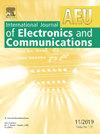基于触发器拓扑的前向深度神经网络学习方法用于超宽带天线建模
IF 3.2
3区 计算机科学
Q2 ENGINEERING, ELECTRICAL & ELECTRONIC
Aeu-International Journal of Electronics and Communications
Pub Date : 2025-08-21
DOI:10.1016/j.aeue.2025.156007
引用次数: 0
摘要
展示智能行为的人类工程系统可以减少与设计复杂电路、计算资源和处理时间相关的限制。机器学习(ML)算法使我们能够模仿和创建这样的智能系统。近年来,机器学习算法在解决复杂电磁电路设计问题方面得到了广泛的认可。高维多参数结构建模是EM研究领域的一个重要问题。为了解决这个问题,本研究提出了一种基于触发器拓扑的深度神经网络(DNN)学习方法,用于超宽带(UWB)天线的快速高效建模。所提出的方法包括两个相互连接的深度神经网络模型(DNN I和DNN II),其中每个模型的输出迭代地馈送到另一个模型,使其能够使用实时输出和过去的预测。随着时间的推移,这种双向模型间反馈增强了模型做出精确预测的能力。通过对小型化高增益超宽带天线和紧凑型四超宽带多输入多输出(MIMO)天线的快速准确建模,验证了该模型的有效性。对于高增益UWB天线,FFDNN的训练MAPE为0.35%,测试MAPE为1.41%,与传统的MLP、DNN和FDDNN模型相比,训练MAPE和测试MAPE分别提高了78%和39%。同样,对于UWB-MIMO天线,FFDNN的训练MAPE为1.12%,测试MAPE为1.20%,与传统的MLP、DNN和FDDNN模型相比,分别提高了约48%和60%。这些结果突出了该模型作为EM设计任务的快速、数据驱动替代品的能力,与传统方法相比,该模型在预测精度和计算效率方面有显著提高。本文章由计算机程序翻译,如有差异,请以英文原文为准。
Flip-flop topology inspired forward deep neural network learning approach for modelling UWB antennas
Human-engineered systems exhibiting intelligent behavior can reduce the constraints associated with designing complex circuits, computational resources, and processing time. Machine learning (ML) algorithms enable us to imitate and create such intelligent systems. In recent years, ML algorithms have gained recognition for efficiently solving complex electromagnetic (EM) circuit design problems. Modeling high-dimensional multi-parametric structures is a significant problem for the EM research community. To address this issue, a deep neural network (DNN) learning approach based on flip-flop topology is presented in this work for fast and efficient modeling of ultra-wideband (UWB) antennas. The proposed approach comprises two interconnected DNN models (DNN I and DNN II) wherein the output of each model is iteratively fed into the other, enabling it to use both real-time output and past predictions. This bidirectional inter-model feedback enhances the capacity of the model to make precise predictions over time. The effectiveness of the proposed model is demonstrated through its application to fast and accurate modeling of miniaturized high-gain UWB antennas and compact quad-UWB multi-input multi-output (MIMO) antennas. For the high-gain UWB antenna, the FFDNN achieved a training MAPE of 0.35 % and testing MAPE of 1.41 %, representing minimum improvements of up to 78 % in training and 39 % in testing compared to traditional MLP, DNN, and FDDNN models. Similarly, for the UWB-MIMO antenna, the FFDNN achieved a training MAPE of 1.12 % and testing MAPE of 1.20 %, marking minimum improvements of approximately 48 % and 60 %, respectively, over traditional MLP, DNN, and FDDNN models. These results highlight the model’s capability to serve as a fast, data-driven surrogate for EM design tasks, offering significant gains in prediction accuracy and computational efficiency over conventional approaches.
求助全文
通过发布文献求助,成功后即可免费获取论文全文。
去求助
来源期刊
CiteScore
6.90
自引率
18.80%
发文量
292
审稿时长
4.9 months
期刊介绍:
AEÜ is an international scientific journal which publishes both original works and invited tutorials. The journal''s scope covers all aspects of theory and design of circuits, systems and devices for electronics, signal processing, and communication, including:
signal and system theory, digital signal processing
network theory and circuit design
information theory, communication theory and techniques, modulation, source and channel coding
switching theory and techniques, communication protocols
optical communications
microwave theory and techniques, radar, sonar
antennas, wave propagation
AEÜ publishes full papers and letters with very short turn around time but a high standard review process. Review cycles are typically finished within twelve weeks by application of modern electronic communication facilities.

 求助内容:
求助内容: 应助结果提醒方式:
应助结果提醒方式:


